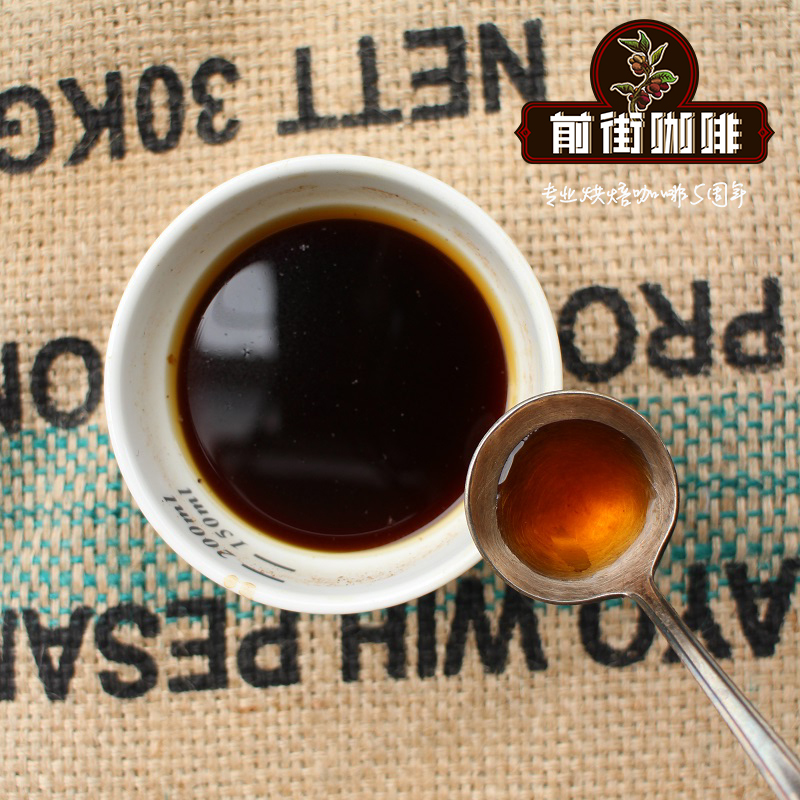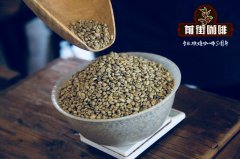What are the ways to treat raw coffee beans? What are the advantages and disadvantages of coffee beans treated with sun water and honey?
What are the ways to treat raw coffee beans? What are the advantages and disadvantages?

All kinds of raw bean treatment methods, we must first know the structure of coffee fruit, cherry-like coffee fruit, from the outside to the inside are peel, pulp, pectin layer, sheep skin (seed shell), silver skin, seed.
The thickness of the pectin layer is about 1-2mm, which can be thought of as the translucent substance outside the tomato seeds, which is difficult to remove. The raw beans we usually buy are actually the innermost seeds and, perhaps, contain some residual silver skins.
All kinds of treatment methods, the purpose is the same, is to peel the beans. Due to the economic considerations of the cost, as well as the differences in climate and other natural environmental conditions, the process of collecting beans may not be the same, but the process will affect the results!
Solarization:
Tanning is the oldest and most convenient way to treat raw beans.
Sift out the floating beans
Pour the harvested coffee fruit into a large trough, the ripe and full fruit will sink to the bottom, the underdeveloped or overripe fruit will surface, and these floating beans need to be removed.
Drying in the second day
Next, the whole coffee fruit with meat belt is put on the bean drying farm to dry. The water content is about 12%. It takes about two to four weeks, depending on the climate of the place of origin.
three。 Shelling
The dried fruit will be naturally dried and the peel, pulp and sheepskin will be removed by a shelling machine, and raw beans will appear.
The advantages of solarization
1. Simple, low processing cost.
two。 The raw bean is naturally dried in the pulp and absorbs the essence of the fruit, so the fruit is rich, sweet and mellow in thickness.
Shortcomings of solarization method
1. In some producing areas, the sun treatment did not screen out the floating beans, resulting in defects in the quality.
two。 During the drying process, the pulp is easy to mildew due to the return of moisture, which pollutes the raw beans.
3. The shelling of the machine inevitably hurts the raw beans, resulting in appearance defects.
Washing method:
Water washing is a common method of raw bean treatment at present.
one。 Sift out floating beans (same sun method)
two。 Remove the pulp
The fresh fruit is sent to the pulp screening machine (pulping machine) to remove the peel and pulp, and the immature fruit will be screened at this stage because it is not easy to separate the pulp. After the pulp screening machine, all that is left is pectin, sheepskin and seeds.
three。 Pectin removal by fermentation
Transfer the peeled seeds with pectin into the fermentation tank. Although the name is water [washing] method, in fact, it is not really washing off pectin, but through the fermentation process, pectin is biodegraded. The fermentation process is about 16-36 hours, during which the pectin must be stirred frequently to accelerate the separation of pectin from the seeds. Water washing fermentation produces acid substances such as citric acid, malic acid and acetic acid, which seep into raw beans, making the beans sour more sour than in the sun. After the fermentation is completed, it is really washed-- wash the beans again.
four。 Dry
After washing, sunlight or machine drying is also needed to reduce the water content to 12%. Because the flesh has been removed by washing
So in the drying process, you don't have to worry about mildew like the sun method. Dried sheepskin raw beans are not as hard as those with pulp and peel in the sun, and can be obtained by using a hulling to remove the shell.
Advantages of washing method
1. Raw beans are dark green in color, complete in appearance and sell well.
two。 The sour taste and bright feeling are better than the sun-dried beans, and the flavor is cleaner.
Shortcomings of washing method
1. In order to obtain 200g raw beans, it takes 1 kg of fruit to be washed and about 2-10 liters of clean water to be consumed. The cost is high.
Semi-washing method:
An improved treatment method for reducing water consumption of traditional washing method
one。 Sift out floating beans (same water washing method)
two。 Remove the pulp (same as washing)
three。 Machine de-pectin
The original water washing method is to remove pectin by fermentation, but the improved method is to remove pectin mechanically by pectin scraper (demucilager).
four。 Dry
Dry in the sun or mechanically to 12% water content.
The flavor of semi-washed beans is between sun-washed beans and washed beans.
There is no water to wash bean acid, no sun bean sweet.
Honey treatment method:
What is honey treatment: according to its original meaning, its scientific name should be "pulp natural". The same as the traditional wet treatment, it removes the thick peel of coffee cherry and retains the sticky pulp layer (mucilage) beneath it. Then it does not use fermentation to remove the sticky pulp layer. Instead, it is allowed to take this layer to dry directly, and then directly remove the slime layer and shell (parchment).
The honey treatment of difficulties:
1. In the process of drying, because the sticky pulp layer is still on the coffee beans, it must be turned frequently in the first few days to prevent the coffee beans from sticking together, so it requires much more manual work than the normal washing method.
two。 If it is not dried as soon as possible, it will easily overferment.
3. If the overall environment is too wet and too cool, or if the sticky pulp layer is left too thick, the coffee beans will easily get moldy, so some coffee farms will use machines to control the thickness of the sticky pulp layer left behind, so that the coffee beans can be dried more quickly, and the overall taste will be more consistent.
4. Compared with wet treatment, it requires more space and takes longer days to dry.
Enhancement method:
1. In the first 2-3 days of the sun, it is best to be done under round-the-clock monitoring, during which part of the pulp layer has been dried and the coffee is less likely to have a bad fermented taste.
two。 In the process of drying, a high scaffolding can be used to make the whole process more ventilated and less prone to mildew.
3. If you dry on the patio or terrace, the mucus in the pulp layer will seep into the patio, so you need to clean up a batch of coffee beans before drying them.
Taste and characteristics:
The advantage of honey treatment is to enhance the body and sweetness of coffee (so it is also known as honey process or miel process), relatively reduce its acidity, and the aroma will be more detailed, but this is the taste after the honey treatment is perfectly executed. If it is not carried out well, it will taste bad acetic acid, like the spicy flavor of onion or garlic. Even if it is carried out quite well, it will still have some muddy taste, and the rest of the rhyme will not be clean. Miscellaneous smell will also be heavier than the general washing method, so on the whole, the risk of honey treatment is much higher than that of the general wet treatment.
Important Notice :
前街咖啡 FrontStreet Coffee has moved to new addredd:
FrontStreet Coffee Address: 315,Donghua East Road,GuangZhou
Tel:020 38364473
- Prev

Papua New Guinea Coffee beans Papua Paradise Bird Coffee beans Story and Flavor characteristics
Why does Papua New Guinea Paradise Bird Coffee? Because there are so many national birds, coffee beans are called birds of paradise. Papua New Guinea is an island country in the western South Pacific, the second largest country in Oceania and a member of the Commonwealth, including the eastern half of New Guinea and the nearby Bismarck Islands and Bougainville Islands.
- Next

The hometown of Yemeni Mocha Coffee-- Yemeni Mocha Coffee History
The hometown of Yemeni mocha coffee-Yemeni mocha coffee history when it comes to Yemeni coffee, it is necessary to mention "mocha". Everyone has heard of "mocha coffee". What exactly is "mocha"? There are many answers to this question. Some people say that mocha is a certain place of origin, and some people remember that mocha is sweet chocolate coffee. In fact, authentic mocha coffee is only produced in
Related
- Detailed explanation of Jadeite planting Land in Panamanian Jadeite Manor introduction to the grading system of Jadeite competitive bidding, Red bid, Green bid and Rose Summer
- Story of Coffee planting in Brenka region of Costa Rica Stonehenge Manor anaerobic heavy honey treatment of flavor mouth
- What's on the barrel of Blue Mountain Coffee beans?
- Can American coffee also pull flowers? How to use hot American style to pull out a good-looking pattern?
- Can you make a cold extract with coffee beans? What is the right proportion for cold-extracted coffee formula?
- Indonesian PWN Gold Mandrine Coffee Origin Features Flavor How to Chong? Mandolin coffee is American.
- A brief introduction to the flavor characteristics of Brazilian yellow bourbon coffee beans
- What is the effect of different water quality on the flavor of cold-extracted coffee? What kind of water is best for brewing coffee?
- Why do you think of Rose Summer whenever you mention Panamanian coffee?
- Introduction to the characteristics of authentic blue mountain coffee bean producing areas? What is the CIB Coffee Authority in Jamaica?

